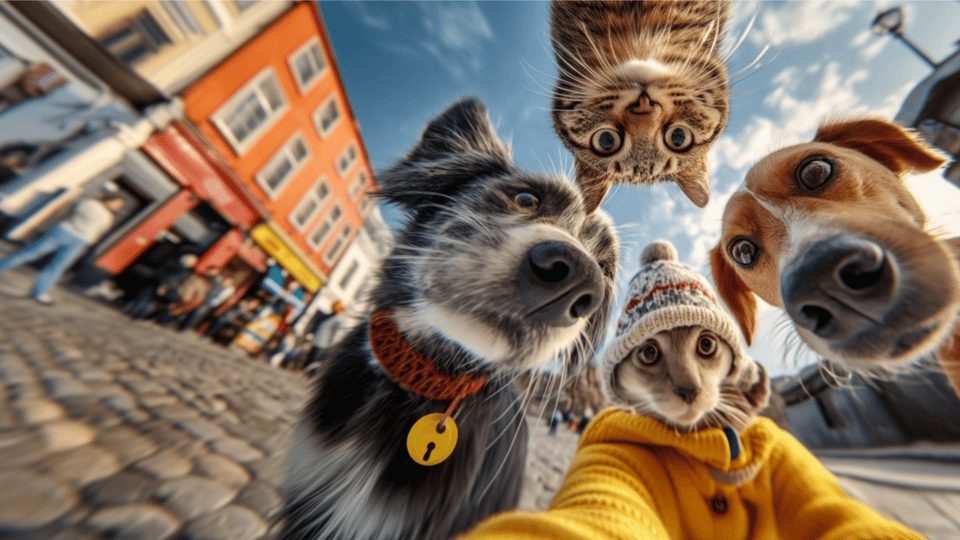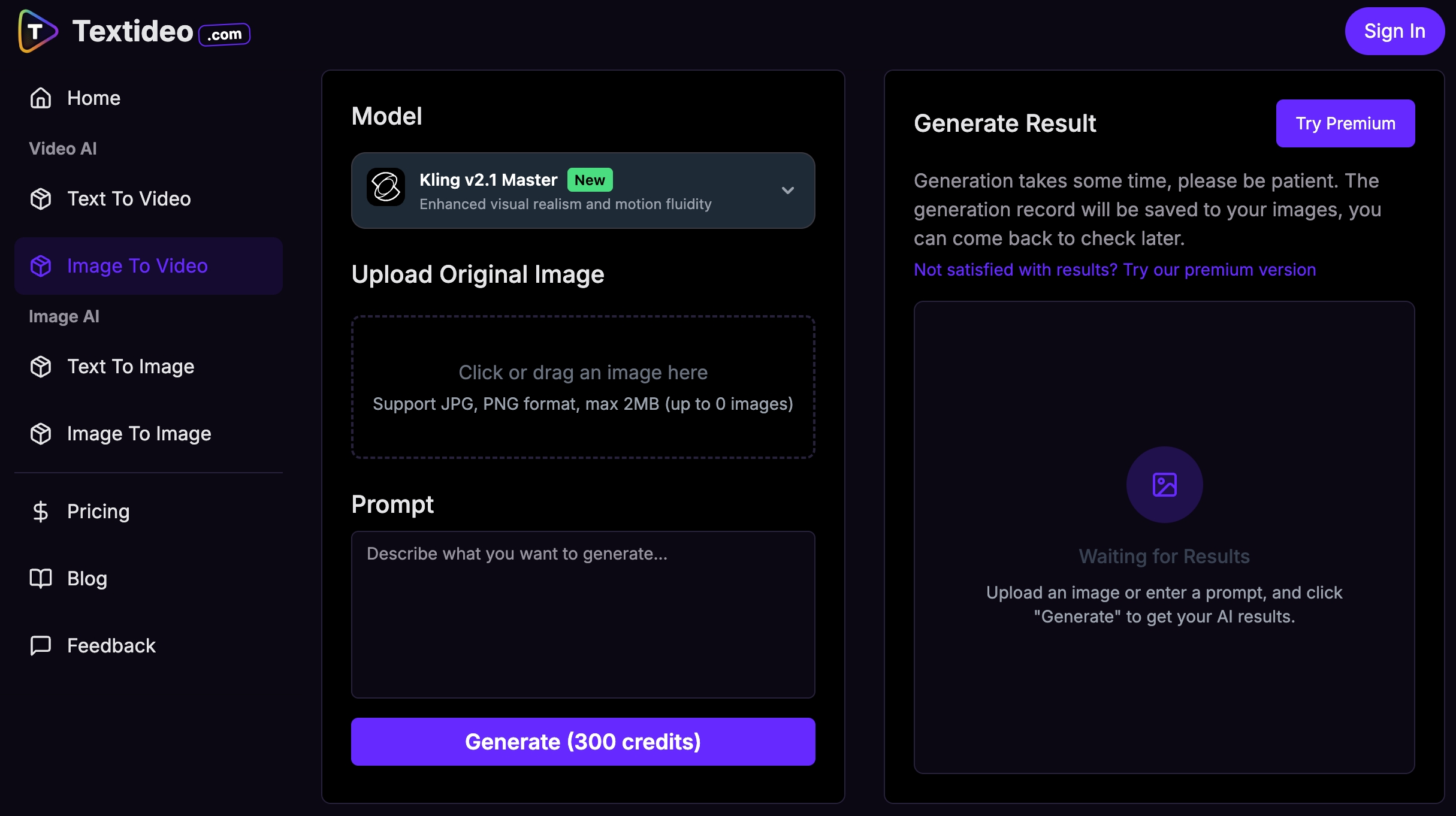Kling AI 2.1 and Master: The Next Frontier of Video Creation for Creators and Professionals
Powering the Future of Content Creation: A Deep Dive into Kling AI 2.1 & Master Engine
In just a few years, AI video tools have evolved from novelty demos into real creative assistants. Among them, Kling AI has quickly become one of the most talked-about platforms—not because it ticks off every technical box, but because it gives creators something we rarely get from AI tools: usable control.
With the recent rollout of Kling AI 2.1 and the enhanced Master Engine, we’re no longer just prompting machines. We’re beginning to co-direct them.
What Makes Kling AI Stand Out?
There’s no shortage of text-to-video tools out there. But Kling AI, developed by ByteDance, hits a rare balance—it combines speed, realism, and creative direction in a way that feels less like a gimmick and more like an early version of what future production might actually look like.
Whether you’re sketching out a short film concept or visualizing a scene for a pitch deck, Kling AI feels like a powerful first draft assistant. It doesn't replace human storytelling, but it shortens the gap between idea and visual.
Kling AI works well for:
- Creators making fast video content for social media
- Teachers or educators looking for visual metaphors
- Game studios testing concepts before animating
- Agencies prototyping before a big production
- Indie filmmakers trying out storyboards on the fly
There’s something exciting about typing a sentence—and watching it unfold on screen 20 seconds later.
What's Changed in Kling AI 2.1?
This update feels less like a version bump and more like a maturity leap.
1. It Actually “Understands” Prompts Better
We’ve all seen generative tools mess up basic logic—merging two objects into one, or confusing backgrounds with characters. Kling AI 2.1 significantly reduces those errors. If you write something like “a fox reading a book under a tree at sunset,” it’ll now produce a scene where each component shows up with surprising accuracy.
It’s not perfect, but it's finally good enough that you don’t spend more time fixing mistakes than generating ideas.
2. Longer Videos, With Less Noise
The jump to 8-second clips at a consistent 1080p 30fps doesn’t sound like much on paper—but in practice, it means the difference between a visual moment and a visual idea. Now there’s enough space for motion, for transitions, and for mood to settle in.
And perhaps more importantly—transitions between frames look less robotic and more fluid, especially in fast-action sequences.
🧬 Enter the Master Engine: Kling AI’s Premium Creative Core
If Kling AI 2.1 is the assistant director, then Master is your cinematographer.
🔍 1. Realistic Physics & Detail-Oriented Motion
One of the first things you’ll notice with Master is how grounded everything feels. When you generate a scene with flowing hair, cloth, or water, there’s genuine weight behind the movement. Even things like shadow behavior and ambient light syncing feel more natural.
For visual storytellers, this means fewer “uncanny valley” distractions—and more confidence in using AI footage for real projects.
🎥 2. You Control the Camera, Not the Other Way Around
Kling AI Master introduces detailed camera motion prompts: pans, zooms, and dynamic transitions. For the first time in an AI video tool, I felt like I was giving cinematic direction, not just vague descriptions.
Example: you can specify something like “start wide on a mountain, zoom into a flying drone, then rotate around it.” Kling AI doesn’t just guess—it follows the action.
3. Tools That Fit Into a Real Workflow
This isn’t just about generation. Kling AI Master includes support for hybrid prompts (image + text), motion refinement tools, and keyframe exports. That last one is crucial—it means you can generate video concepts and bring them directly into tools like Premiere Pro or Runway without friction.
Who Should Use Kling AI 2.1, and Who Needs Master?
-
If you're an educator, marketer, or casual creator looking to transform ideas into visuals quickly, Kling AI 2.1 is more than enough. You don’t need editing experience, and the learning curve is almost flat.
-
But if you care about shot precision, motion accuracy, and cinematic quality, Master is built for you. It’s not for everyone—but for filmmakers, animators, and visual designers, it unlocks a new layer of creative freedom.
💬 Real Feedback from Real Creators
“Master finally lets me direct my scenes. I’ve replaced two tools in my pipeline already.” — @PixelMotion
“Kling AI saves me time without making me feel like I’m sacrificing control.” — @EducraftYT
“We generated a campaign concept in Kling AI that blew our client away—and it only took two days.” — @BrandSpark
“This is the first AI tool that behaves like a camera operator.” — @YanVisuals
“I used Kling AI to build visual teaching aids. My students’ comprehension and engagement both jumped.” — @LearnGenAI
“Kling AI’s movement realism outpaces anything else I’ve tried—including Runway and Gen-2.” — @VisualFlow
What’s on the Horizon: Kling AI 3.0
Kling AI's development isn’t slowing down. Based on the official roadmap, here’s what’s coming:
- AI character interactions with synced dialogue
- Lip-sync generation from text or audio input
- Scene sequencing and timeline controls
- Extended video durations (12+ seconds)
In short, it’s moving from a video generator toward becoming a narrative engine—and that shift could change the future of short-form storytelling.
🎬 Final Thoughts
What Kling AI has done right is not just give us better output—but give us tools we actually want to use. The fact that you can sit down, type out a visual idea, and get something watchable in under a minute is incredible.
We’re at the beginning of something new in content creation—not a replacement for creativity, but a tool that accelerates it.
Now that Kling AI 2.1 and Master are publicly available, it’s worth taking an hour to experiment. You might be surprised at just how much you can create—without writing a single frame of code or storyboard.There’s no better time to try it out for yourself.



✏️Leave a Comment